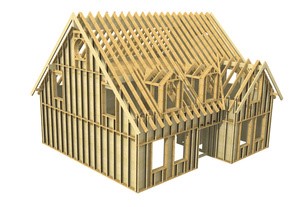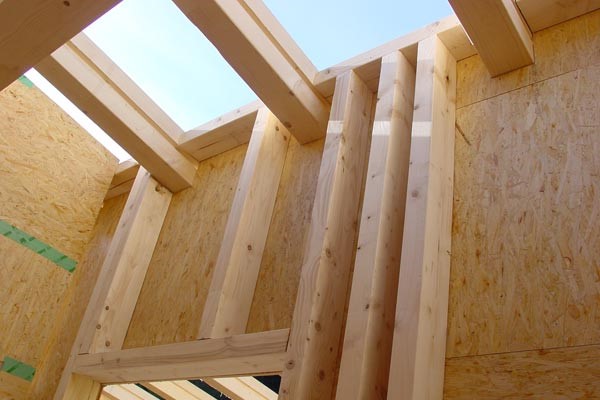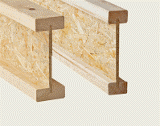01 02 03 04 05 06 07
03_Timber stud/timber frame structures
Timber stud/timber frame structures
Timber stud/timber frame structures are based on a load-bearing system of timber studs and connecting crosspieces or frames, which are mainly installed at the level of the respective ceilings.

Example of timber frame structure (source: Holzbau Henz GmbH)
The load-bearing structural elements in timber stud/timber frame buildings consist of non-frame timber or wood-based materials.
Solid timber profiles can be used; they usually have a width of 6 to 12 cm, with stud bays measuring 14 to more than 20 cm. If glued laminated timber is used, profiles as slim as 4 cm (say) can be achieved.

Timber frame structure (source: Holka Genossenschaft)
If I-joists made from wood-based materials are used, even slimmer profiles are feasible. With these slim structural elements wood-based materials have the advantage that the load-bearing structure involves less thermal bridging. However, the thermal conductivity of wood-based materials can exceed that of solid timber.

Timber I-joists (source: www.dataholz.com, ein Service der Holzforschung Austria)
What is thermal conductivity?
Thermal conductivity is a material property, namely the ability of a material to transport heat through thermal conduction.
The lower the thermal conductivity, the better the insulation effect.
The unit of thermal conductivity (λ) is W/mK.
Licensed under the Creative Commons Attribution Non-commercial No Derivatives License 4.0